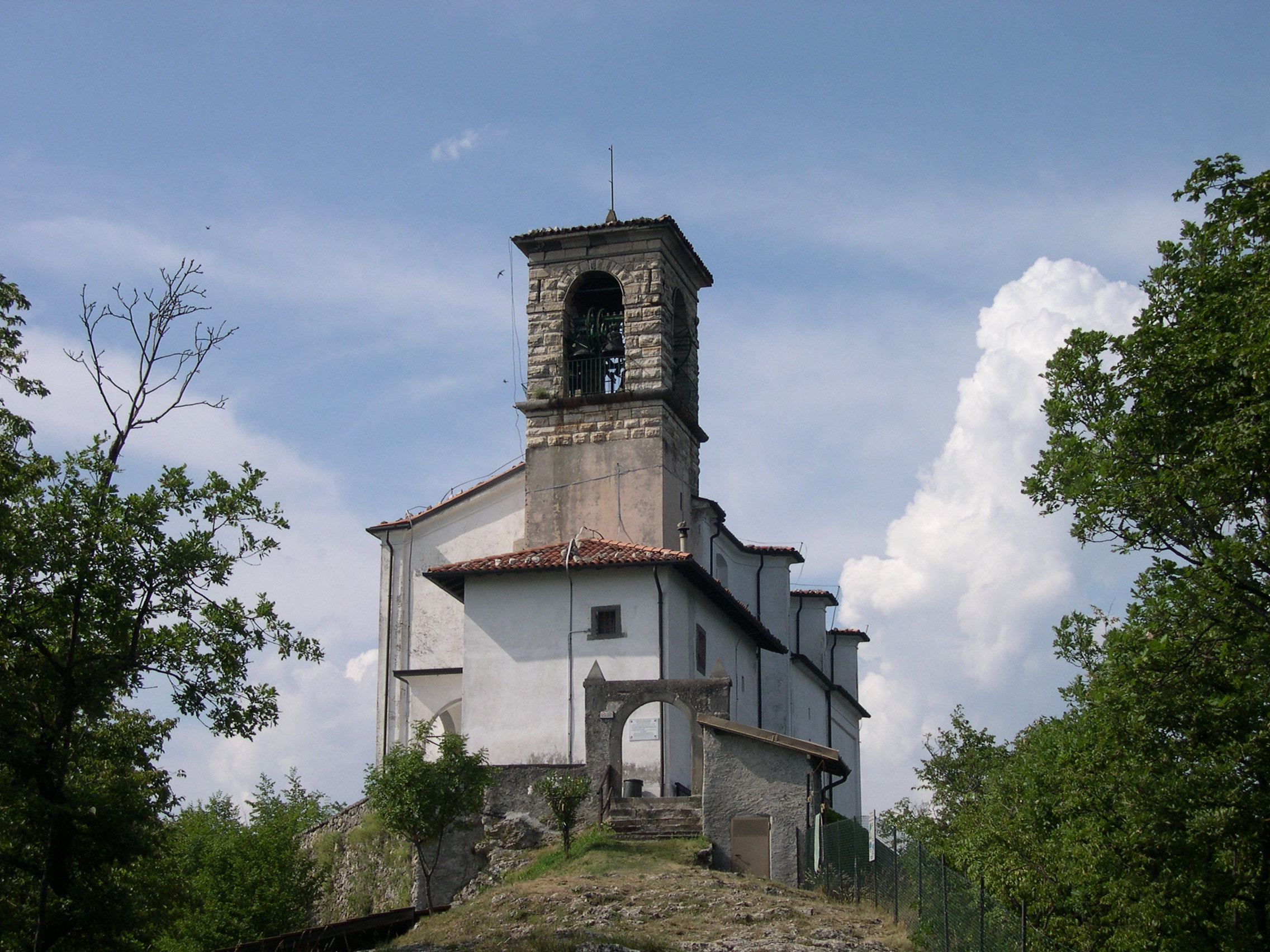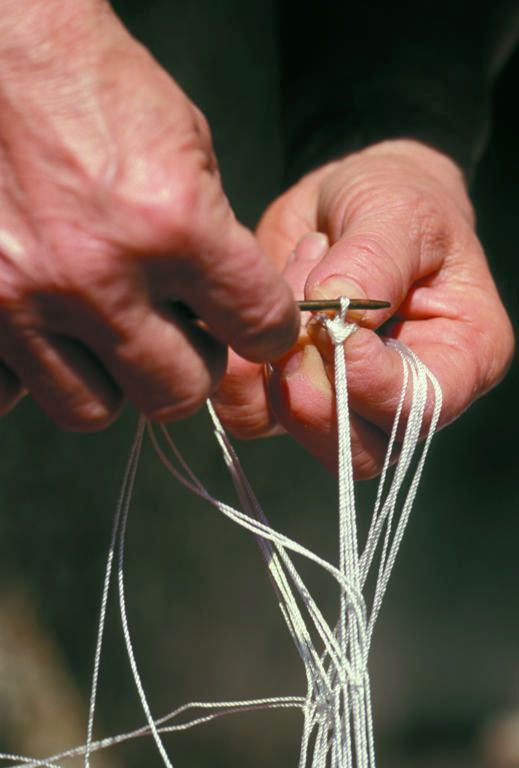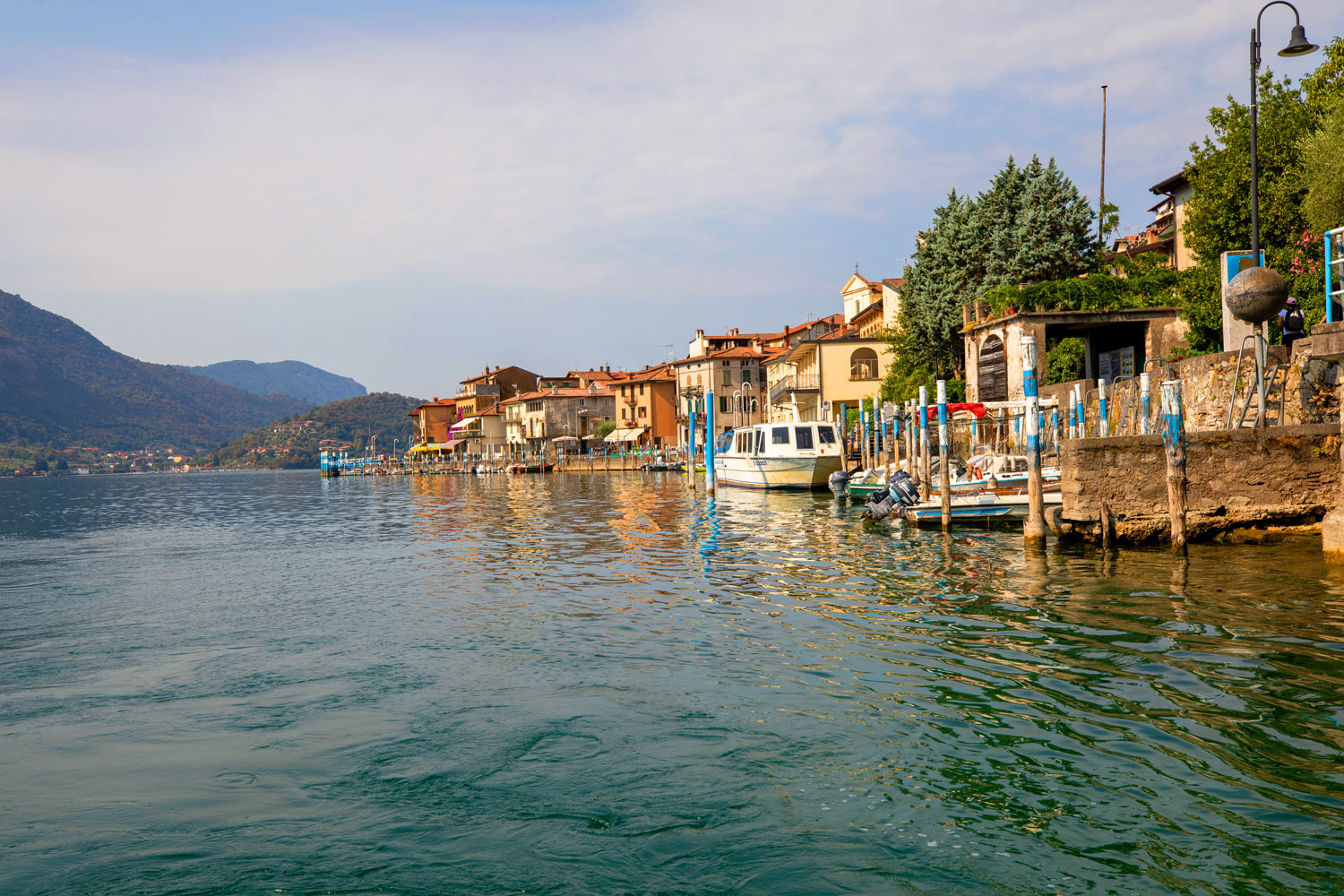Art and culture - Church and religious places
Madonna della Ceriola Sanctuary
The origins of the Madonna della Ceriola Sanctuary date back around the mid 5th century when Saint Vigilio, bishop of Brescia, introduced Christianity into the Lake Iseo area, thereby abolishing the worship of the pagan goddess Isis and spreading the faith in Jesus Christ and the Virgin Mary.
Saint Vigilio built a small chapel on the top of the island and dedicated it to the Virgin Mary as a symbol of purification from pagan superstitions and of the new light of Christianity. This small church was the first parish church of the island and was called “Santa Maria de curis”, as shown in the list of possessions of the Diocese of Brescia, which dates back to 1410. It was also the first church of the lake to be dedicated to the Virgin Mary. Later it was named Madonna della Ceriola, probably after the image of the Virgin (12th cent.) carved in a stump of “cerro” (Turkey oak). The Virgin was depicted seated on a throne, wearing a wide mantle and holding Baby Jesus.
On 14 March 1580 Saint Charles Borromeo, archbishop of Milan, on visit in the Brescia area, sent Don Ottavio Abbiati to visit the island’s shrine. His report on the visit states: “Wide and decent shrine, one consecrated altar and consecrated church, damaged paintings, triptych with statue of the Virgin”. After this visit the rector of the parish, Francesco Augustinelli, decided to renovate the shrine and its original structure changed completely. A new presbytery was added, thereby improving the building’s proportions. A wrought-iron gate, dividing the sacred area from the area reserved to worshippers, was built. The old gable roof was replaced by a barrel vault, and two side chapels were added, which would later hold the altar of Saint Fermo and the altarpiece Death of Saint Joseph, carried out by Brescian artist Andrea Paglia in 1763. Works ended at the beginning of the 17th century, as shown by the writing on the architrave of the facade door: “Francesco Augustinelli presbiteris Rettoris Ope 1600”.
In 1750 the facade was completely transformed by a solid granite bell tower built on the foundations of the ancient shrine. Fortunately in 1815 a lightning caused part of the wall inside the Eastern facade to peel off, giving light to a well-preserved fresco depicting a Cristo Ecce Homo with a crown of thorns, tied to a column with a rope. This work was attributed to Giovanni da Marone. Then there was an outbreak of cholera and the islanders, in despair for the many casualties caused by the disease, turned to “their Madonna” walking in procession towards the Sanctuary where they vowed they would dedicate that Sunday to her if that punishment ceased. From that day on the disease weakened
and then disappeared completely. Since then every second Sunday of July is dedicated to the “Madonna of the Cholera” who is worshipped to celebrate the defeat of the disease.
The Shrine is 23m long, 7.5m wide and 10m high; it is an aisleless church, characterized by a barrel vault resting on a brick cornice which follows the perimeter of the church and is supported by pilasters with capitals in baroque style, the same style which characterizes the friezes and decorations of the presbytery vault and dome. On the high altar, made of black and white marble, there is a wooden frame dating from the 15th century. The cornice was added in 1620 and consists of two Corinthian columns supporting the trabeation and tympanum. The tryptich is composed of the Virgin Mary (at the centre) and two golden wood statues of Saints Faustino and Giovita (the patron saints of Siviano). Both the Virgin and Baby Jesus wear an old, golden crown. The lunette overhanging the high altar depicts the Birth of Jesus; on the dome of the presbytery you can find the Purification of the Virgin Mary, whereas the three medallions decorating the nave represent The Crowning of the Madonna, Our Lady of the Assumption and The Annunciation. The inscription on the stucco-worked plaque on the triumphal arch recalls the mystery to which the Shrine is dedicated: “Suscepimus Deus Misericordiam Tuam In Medio Templi Tui”.
To the side of the high altar you can find two chapels: the 17th century chapel of S. Fermo, on the left, characterized by an altar made of carved wood, and the chapel of S. Giuseppe, on the right, with Paglia’s work. As you go in on your left you can see the remains of the frescos of the ancient church, with a Virgin and Child very similar to the statue, probably commissioned by a family whose name can be only partly read because part of this beautiful work was cut down to open a door for the bishop’s visit. On the same facade, inside, over the door, there is a fresco dating back to 1924 depicting Saint Vigilio, bishop of Brescia, an apostle who brought faith and devotion to the Sebino area. At the sides of the presbytery there are two frescoes by artist Locatelli (1924) depicting Saint Bartolomea Capitanio, patroness of Lovere, and Saint Angela Merici. Between the high altar and the nave there is a 17th century wrought-iron gate.
The votive tablets (ancient and recent paintings) hanging at the bottom of the left-hand side wall are dedicated to the Virgin Mary and are also called “ex voto”. There are 82 paintings, some of them dating back to 1620, but most of them dating from the 19th century, which represent the believers’ devotion and gratefulness to the Madonna. Nowadays this custom still exists, but people hang photographs on the wall, instead of paintings. There are also many prayers to the Madonna, poems by Emilia Belli, a poetess from Lake Iseo, and songs dedicated to the crowning of the Virgin Mary, which took place on 30 August 1924. While waiting for that fateful day the island believers offered part of their possessions, thereby enabling the casting of a magnificent crown for the Madonna and one for Baby Jesus.
Nowadays the Shrine, legally on the island’s territory, is the symbol of the municipal unification of all the citizens of the municipality of Monte Isola, which bears on its blazon the image of the Shrine of Madonna della Ceriola.
How to get there:
– On foot, from Peschiera Maraglio: the trail starts outside the Information Office and winds uphill in the village. Once you cross the road that goes up to Senzano, the path begins to advance into the woods. In just over an hour, passing through the village of Cure, you will be at the Shrine. Recommended comfortable and closed sneakers (no sandals, no heels).
To be a good tourist consult the rules here
Difference in height: 450m
Duration: 80min
Km: 4
Difficulty: E (for excursionists)
– By bus: the regular line bus service is active both on weekdays and on holidays.
Masses timetable:
– Saturday at 10 am
During the masses the visits are suspended.
Photos by: Linoolmostudio.it
Contacts
Via Cure, Monte Isola
Opening hours
Summer
from 9.30 am alle 6 pm
Winter
from 10 am to 5 pm











Your contents on
#visitmonteisola